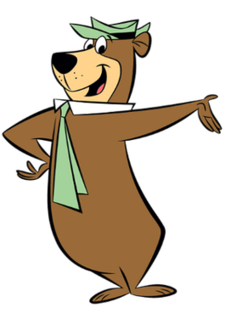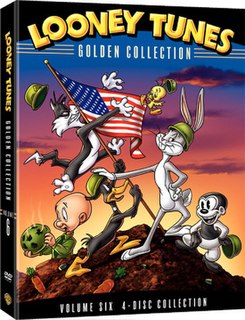Story
The movie begins with a vignette showing the planets Mars and Earth, during which the narrator (voiced by Butler) explains that, in the summer of 1954, the planets came so close to each other that "a cosmic force was disturbed" and a baby destined for Earth arrived at Mars, and vice versa. Two comet-like bodies are shown colliding and then assuming paths distinct from their original directions of travel. The transit of one, colored green, is followed as it flies through Earth's atmosphere, above hundreds of homes with strange-looking TV antennas, then arrives at a high-rise hospital.

Mars is the fourth planet from the Sun and the second-smallest planet in the Solar System after Mercury. In English, Mars carries a name of the Roman god of war, and is often referred to as the "Red Planet" because the iron oxide prevalent on its surface gives it a reddish appearance that is distinctive among the astronomical bodies visible to the naked eye. Mars is a terrestrial planet with a thin atmosphere, having surface features reminiscent both of the impact craters of the Moon and the valleys, deserts, and polar ice caps of Earth.
Joseph Wilbur (voiced by Butler) is waiting with other anxious, heavily smoking fathers in the hospital waiting room. Finally, an announcement (voiced by Foray) comes over the P.A. that Joseph can see his baby. Excited, he presses against the glass of the nursery window while his baby is rolled in on a small gurney. The baby becomes visible, but wait! His head is green! Then, he jumps up from the gurney and we see that his head has two antennae that spark and make Morse-code style beeps! "Somebody goofed!" Joseph says before fainting.
The next scene opens in a suburban neighborhood. Joseph is arguing with his wife, Martha (voiced by Foray). He is pleading to her to let the baby stay in the house. She counters that the baby needs sunshine and fresh air. So, Joseph pushes the baby in a stroller, fearful of being seen. While he is not looking, the baby crawls up on the stroller hood and beeps at Joseph, startling him. Then, the baby crawls up on a wall and communicates with a bee sitting on a nearby flower. We next see Joseph back at the house, pleading once again, unsuccessfully, to keep the baby home, saying that they "Can't have him talking to any strange bee he might meet on the street", Martha irritably asks Joseph if he is ashamed of himself. Once again, he's pushing the stroller along when an elderly woman (voiced by Foray) begins to dote on the baby, picking him up and noting that he is "such a healthy green baby, too." As she begins to realize something is strange, the baby beeps his antennae at her and takes her glasses using them, putting them on, amplifying his beady black eyes on the glasses, making them look bigger. Horrified, Joseph hurries the baby back to the house. The elderly lady, still unusually calm and with her glasses back on, pulls a tuning reed out of her pocket and uses it before letting out two bloodcurdling screams.
In the next scene, Martha is beginning to worry about the baby. He is doing the family's income taxes, spelling out Einstein's Mass–energy equivalence with letter blocks, and creating a Tinkertoy (named "Stinkertoy" in the cartoon) model of the (fictional) illudium molecule made famous in the Marvin the Martian cartoons. We are also shown a model of the solar system made from a basketball and Christmas ornaments hung from the ceiling with string, and a graph on a chalkboard titled "Hurricane Possibilities for Year 1985". There are also plans not only to build a better mousetrap, but corresponding blueprints on how to build a better mouse. Agreeing that "he should play more", Joseph sits the baby in front of the T.V., where "Captain Schmideo" is displaying a toy flying saucer being offered as a promotion for Cosmic Crunchies even though the screen identifies it as "Ghastlies", the "new wonder cereal made from unborn sweet peas". The baby brings in a T-square and triangle, measures the dimensions of the saucer displayed on the T.V. screen, and retires to his room, where he builds "his own toy spaceship".
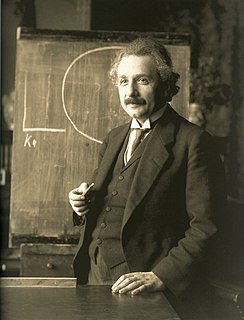
Albert Einstein was a German-born theoretical physicist who developed the theory of relativity, one of the two pillars of modern physics. His work is also known for its influence on the philosophy of science. He is best known to the general public for his mass–energy equivalence formula E = mc2, which has been dubbed "the world's most famous equation". He received the 1921 Nobel Prize in Physics "for his services to theoretical physics, and especially for his discovery of the law of the photoelectric effect", a pivotal step in the development of quantum theory.
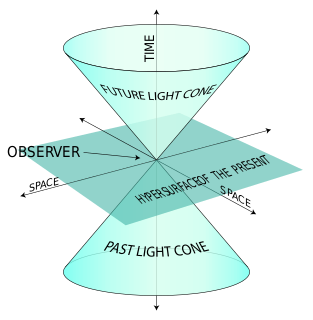
In physics, mass–energy equivalence states that anything having mass has an equivalent amount of energy and vice versa, with these fundamental quantities directly relating to one another by Albert Einstein's famous formula:

The Tinkertoy Construction Set is a toy construction set for children. It was created in 1914—six years after the Frank Hornby's Meccano sets—by Charles H. Pajeau, who formed the Toy Tinker Company in Evanston, Illinois to manufacture them. Pajeau, a stonemason, designed the toy after seeing children play with sticks and empty spools of thread. Pajeau partnered with Robert Pettit and Gordon Tinker to market a toy that would allow and inspire children to use their imaginations. After an initially slow start, over a million were sold.
Next, the family receives a letter from Mars delivered by a small rocket. Martha expresses comic relief that it was "only" that and not a letter from Mother until both spouses realize the difference and both yell "Mars?!" in shock. The message, from "Sir U. Tan of Mars" (a reference to a popular vegetable laxative, "Serutan"), relates the event portrayed in the opening scene, adding that the Martian baby's name is "Mot". Furthermore, Tan states that their baby is on Mars and they call him "Yob". The Earthlings are cautioned to guard the baby carefully until the exchange can be made. At that moment, using his highchair as a launch pad, Mot launches his "toy" spaceship out the bedroom window. The frightened Joseph first chases him by foot, then by car. Joseph reaches a high-rise hotel just as Mot is flying into a window on an upper floor. Inside the auditorium, a U.F.O. skeptic (voiced by Butler) is deriding the concept of "little green men from Mars" and "flying saucers" until the little green baby in his flying saucer stops right in front of him, after which the skeptic starts laughing, then bursts into tears.
Little green men is the stereotypical portrayal of extraterrestrials as little humanoid-like creatures with green skin and sometimes with antennae on their heads. The term is also sometimes used to describe gremlins, mythical creatures known for causing problems in airplanes and mechanical devices. Today, these creatures are more commonly associated with an alleged alien species called greys, whose skin color is described as not green, but grey.
Joseph arrives just as Mot is flying out another open window. He tries, unsuccessfully, to grab the spaceship, after which he falls out the window. Mot flies up to a waiting mother ship, which takes him in. The view then changes to Joseph yelling in demand as to where Yob is as he falls to his likely death and the street far below.
The scene fades and wavers to the P.A. in the hospital waiting room, where Joseph, this time alone in the waiting room, is called to see his baby. He had apparently fallen asleep while reading a science magazine with the lead story of "Can we communicate with Mars?". Worried because of his dream, he goes to the window of the nursery, this time to see a healthy human boy rolled in. He whistles with relief. In a twist ending, the view then zooms in to the baby's wrist, where a bracelet is worn with the letters, "YOB".
Wile E. Coyote and the Road Runner are a duo of cartoon characters from the Looney Tunes and Merrie Melodies series of cartoons. In each episode, the Coyote repeatedly attempts to catch and subsequently eat the Road Runner, a fast-running ground bird, but is never successful. Instead of his animal instincts, the Coyote uses absurdly complex contraptions to try to catch his prey, which comically "backfire", with the Coyote often getting injured in slapstick fashion. Many of the items for these contrivances are mail-ordered from a variety of companies that are all named Acme.
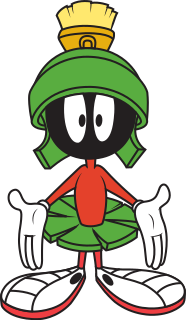
Marvin the Martian is a character from Warner Bros.' Looney Tunes and Merrie Melodies cartoons.

June Foray was an American voice actress who was best known as the voice of such animated characters as Rocky the Flying Squirrel, Lucifer from Disney's Cinderella, Cindy Lou Who, Jokey Smurf, Granny from the Warner Bros. cartoons directed by Friz Freleng, Grammi Gummi from Disney's Adventures of the Gummi Bears series, and Magica De Spell, among many others.

Earth vs. the Flying Saucers is a 1956 American black-and-white science fiction film from Columbia Pictures, produced by Charles H. Schneer, directed by Fred F. Sears, that stars Hugh Marlowe and Joan Taylor. Earth vs. the Flying Saucers was released as a double feature with The Werewolf.

Invaders from Mars is a 1953 independently made American SuperCinecolor science fiction film, produced by Edward L. Alperson Jr., directed by William Cameron Menzies, that stars Jimmy Hunt, Helena Carter, Arthur Franz, Morris Ankrum, Leif Erickson, and Hillary Brooke. The film was distributed by Twentieth Century-Fox Film Corp.
Beep Prepared is a Warner Brothers Merrie Melodies American theatrical cartoon short released in 1961. It features Wile E. Coyote and the Road Runner. Chuck Jones and designer Maurice Noble directed from a story by John Dunn and Jones. The quartet animated the characters. The title is a play on the Boy Scouts of America motto "Be Prepared".

Haredevil Hare is a 1948 Looney Tunes cartoon directed by Chuck Jones. It stars Bugs Bunny and it is the debut for Marvin the Martian — although he is unnamed in this film — along with his Martian dog, K-9. All the voices are done by Mel Blanc. Marvin's nasal voice for this first film is different from the later one he is most known for, which was similar to one that Blanc used for the emcee in What's Cookin' Doc?, for just one line, where the emcee says, "Shall we give it to him, folks?"
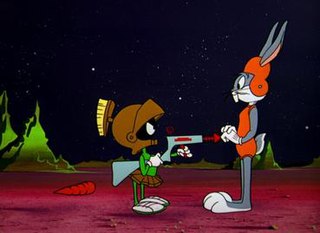
Mad as a Mars Hare is a 1963 Warner Bros. Merrie Melodies cartoon featuring Bugs Bunny and Marvin the Martian. The cartoon's title is a play-on-words of the famous phrase to be "mad as a March hare", the origins of which are disputed. This is Marvin's final appearance in the Looney Tunes shorts during the Golden Age of Animation.
The Jet Cage is a Looney Tunes cartoon released in September 1962 by Warner Bros. The short runs for about six minutes and is written and directed by Friz Freleng.
Beep, Beep is a Warner Bros. cartoon released in 1952 in the Merrie Melodies series featuring Wile E. Coyote and the Road Runner. It was later reissued as a Blue Ribbon cartoon. The cartoon is named after the Road Runner's catchphrase.

The Hasty Hare is a 1952 Looney Tunes cartoon, directed by Chuck Jones, and starring Bugs Bunny. Marvin the Martian is assigned to capture an Earth creature, and the first one he comes across is Bugs. The title is a pun on the movie title The Hasty Heart.
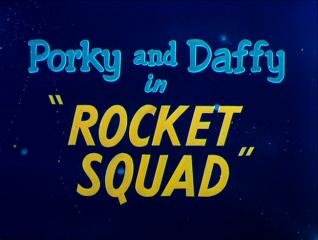
Rocket Squad is a 1956 Warner Bros. theatrical cartoon short produced by Eddie Selzer. It was directed by Chuck Jones and written by Tedd Pierce starring Daffy Duck and Porky Pig as futuristic space cops who patrol the Milky Way Galaxy. It is a parody of Dragnet and the title is a pun on Racket Squad.
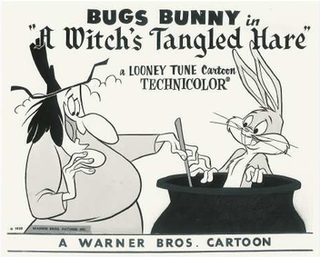
A Witch's Tangled Hare is a 1959 Warner Bros. Looney Tunes theatrical cartoon short directed by Abe Levitow. In the cartoon Mel Blanc plays voice roles for Bugs Bunny and Sam Crubish, while June Foray voices Witch Hazel. The cartoon makes many references to various plays by William Shakespeare.

"Lighter Than Hare" is a Warner Bros. Merrie Melodies animated short that Friz Freleng wrote and directed. It was originally released on December 17, 1960. The title is a play on the phrase lighter than air. It was one of three Bugs cartoons that Freleng both wrote and directed, the others being From Hare to Heir (1960) and Devil's Feud Cake (1963).
Hare-Way to the Stars is a 1958 Warner Bros. Looney Tunes cartoon featuring Bugs Bunny and Marvin the Martian. The title is a play on the song "Stairway to the Stars."

Tom and Jerry: Blast Off to Mars is a 2005 American animated direct-to-video science fiction slapstick comedy film starring Academy Award-winners Tom and Jerry, produced by Warner Bros. Animation and Turner Entertainment Co., it was the second made-for-video attempt to recapture the style of William Hanna and Joseph Barbera's original film shorts from Metro-Goldwyn-Mayer. With both the pre-production and post-production processes being based in the United States, it was animated overseas by Toon City in Manila, Philippines.
Little Go Beep is a 2000 Looney Tunes cartoon starring infant versions of Wile E. Coyote and the Road Runner. It was directed by Spike Brandt and the music was composed by Richard Stone in his final credit before his death. The title is a play on the nursery rhyme "Little Bo Peep."
Ready Jet Go! is a preschool CGI animated television series produced by Wind Dancer Films. The series premiered on PBS Kids on February 15, 2016. It was created by animator and Hey Arnold! creator Craig Bartlett, and is produced in cooperation with NASA's Jet Propulsion Laboratory. The show is aimed at kids ages 3 to 8. On August 17, 2016, PBS Kids announced the renewal of the series for a second season, which premiered on April 2, 2018.

Popeye, the Ace of Space (1953) is a 3D theatrical cartoon released as a Stereotoon. It was produced by Famous Studios for the Stereotoon series featuring Popeye and distributed by Paramount Pictures. It was the first of two Paramount cartoons to be created in 3D format. The other was Boo Moon with Casper the Friendly Ghost. Aiming to make a big impression on audiences, Paramount allocated additional funding for the Stereotoons which more than doubled the amount usually budgeted for Famous Studios cartoons of the day.





